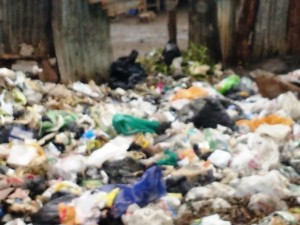You might wonder how trash and hope relate to each other. Last Saturday I watched the thriller “Trash: Thieves of Hope.” It was filmed in one of Rio’s favelas. It’s a harsh movie that confronts you with the reality of children who survive by picking up items with some residual value from humongous mounds of trash. I couldn’t help but think of the slums in Kenya.

By chance, on Sunday I came across an article about the Eastlands College of Technology, an educational project launched recently in the Eastlands slum area outside Nairobi. Both the movie and the article gave me some hope.
The movie shows the capacity of human beings to maintain a dignified existence even under survival conditions. A kid finds a wallet in the trash, and two friends join him to unravel a case of political corruption. I won’t reveal any more details: go watch it! The plot will keep you on your toes!
I first learned about the Eastlands College of Technology during my stay at Strathmore Business School. A model was on show at the entrance to encourage donations for it (the project is promoted by Strathmore Educational Trust). I was happy to hear about its launch last Spring. Its facilities have a capacity for 800 students, and a second building will open in two years. Its mission is “To serve Kenya’s Formal and Informal Industry by providing Vocational, Industrial and Entrepreneurial training.” A great contribution to Kenya, a country that has 20 million people (50 % of the population) under 25 with an unemployment rate around 80% .
And here’s where the movie and the College connect, and so do trash and hope: A commentator describes the movie as “a trip to the heart of the misery and the essence of human dignity.” And that’s what I felt the Eastlands College of Technology aims to do: enhance human dignity in the heart of misery and trash. Let me illustrate with an anecdote I read in an article about the College.
Moses – one of the promoters – asked some young fellows in the area to help put a fence around the land just purchased for the College, and offered to pay a small amount for each fence post they put up. Moses closed the contract by shaking the hand of each boy. This came as a surprise: “Don’t you know that people avoid us and are afraid of us, and think we are animals?” Stories came out about their life on the street, and their daily struggle to get enough to eat. Moses was treating them as human beings, and that was the beginning of a deep friendship.
Any thoughts?


It is really true that many countries have similarities with that kind of poorness and misery. I had the opportunity to stay one day with Amin. Amin was a boy like many others. Tired of his life at home and he and his sister, Sabira, ran away. They spent three years in Bombay’s railway stations. One day were picked up and were carried to a home for homeless children. They grew up there until they could survive by themselves.
He wrote a book in 2013 named, “Bombay: Life is life, I am because of you”. He dedicated the book to his home and to every street child in the world. His Dream: opening “Bombay to Barcelona Library Café”. Special place for people to have quality tea and coffee along with some little snacks, while reading a book or sharing some experiences with others. Nowadays Sabira is a nurse with Doctors Without Borders who works with people with HIV / AIDS and tuberculosis. Amin shows people Bombay city and whatever they like. He is the owner of a rental car company. They were street children and they are getting their own dreams and as they say, “this is not the end, only the beginning”.
Jose Pedro, thank you for sharing Samin’s story with us. I like very much the title of his book, especially the part “I am because of you.” It reminded me of what I heard in Nairobi: Westerners say “I am because I think”; Asians, “I am because I become”; and Africans, “I am because you are.” A lot of food for thought…
Very interesting! It also reminds me these archetypes based on the different senses….. sight, hearing, taste, smell and touch, “I see it well”, “It smells good”, “it sounds good” ……..
Huh! I didn’t know this! So, which sense was with which geography?
It has nothing to do with geographies or races but with human beings and their behaviors.
Ah, ok! I thought there were some cultural traits attached to that. Interesting in any case! It maybe that’s at the individual level, not the country or regional levels.